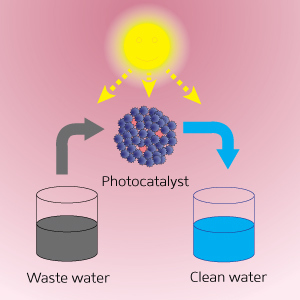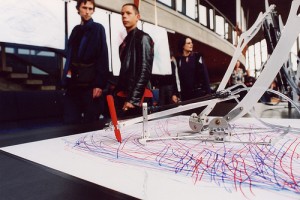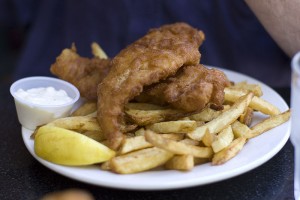There are two items about rose petals as bioinspiration for research in this posting. The first being the most recent research where scientists in Singapore have made an ultrathin film modeled on rose petals. From an Aug. 13, 2014 news item on Nanowerk (Note: A link has been removed),
A*STAR [based in Singapore] researchers have used nanoimprinting methods to make patterned polymeric films with surface topography inspired by that of a rose petal, producing a range of transparent films with high water pinning forces (“Bioinspired Ultrahigh Water Pinning Nanostructures”).
An Aug. 13, 2014 A*STAR news highlight, which originated the news item, describes the nature of the research,
A surface to which a water droplet adheres, even when it is turned upside down, is described as having strong water pinning characteristics. A rose petal and a lotus leaf are both superhydrophobic, yet dissimilarities in their water pinning properties cause a water droplet to stick to a rose petal but roll off a lotus leaf. The two leaf types differ in their micro- and nanoscale surface topography and it is these topographical details that alter the water pinning force. The rose petal has almost uniformly distributed, conical-shaped microscale protrusions with nanoscale folds on these protrusions, while the lotus leaf has randomly distributed microscale protrusions.
The imprinted surfaces developed by Jaslyn Law and colleagues at the A*STAR Institute of Materials Research and Engineering and the Singapore University of Technology and Design have uniformly distributed patterns of nanoscale protrusions that are either conical or parabolic in shape. The researchers found that the water pinning forces on these continuously patterned surfaces were much greater than on non-patterned surfaces and surfaces composed of isolated nanopillared structures or nanoscale gratings. They could then achieve high water pinning forces by patterning the nanoprotrusions onto polymeric films with a range of different non-patterned hydrophobicities, including polycarbonate, poly(methyl methacrylate) and polydimethylsiloxane (see image).
“Other methods that recreate the water pinning effect have used actual rose petals as the mold, but unless special care is taken, there are likely to be defects and inconsistencies in the recreated pattern,” says co-author Andrew Ng. “While bottom-up approaches for making patterns — for example, laser ablation, liquid flame spray or chemical vapor deposition — are more consistent, these methods are limited in the types of patterns that can be used and the scale at which a substrate can be patterned.”
In contrast, nanoimprinting methods are capable of fabricating versatile and large-scale surfaces, and can be combined with roll-to-roll techniques, hence potentially enabling more commercial applications.
The patterned polycarbonate surfaces were also shown to reduce the ‘coffee-ring’ effect: the unevenly deposited film left behind upon the evaporation of a solute-laden droplet. This mitigation of the coffee-ring effect may assist microfluidic technologies and, more generally, the patterned surfaces could be used in arid regions for dew collection or in anti-drip applications such as in greenhouses.
The study which was published online in Dec. 2013, was featured in a Jan. 22, 2014 article by Katherine Bourzac for C&EN (Chemistry and Engineering News),
In the early morning, dew clings to rose petals; when the sun rises, the dewdrops act like tiny lenses, making diffraction patterns that attract pollinating insects, says Jaslyn Bee Khuan Law, a materials scientist at the Agency for Science, Technology, and Research (A*STAR), in Singapore. A drop of water will cling to a rose petal even when it’s tilted or held upside down. The petals can hold onto these droplets because their surfaces consist of closely packed conical structures a few micrometers across. These microscale surface patterns tweak the surface tension of the water droplets, causing them to cling to the petals.
…
But none of these fabrication methods are amenable to large-scale, low-cost manufacturing, preventing commercialization of the water-clinging surfaces. So Law turned to a specialty of her lab: nanoimprint lithography. This printing method utilizes metal or silicon drums molded with nanoscale features on their surfaces. When the molds are heated and pressed against sheets of plastic, the plastic is embossed with the nanoscale pattern. This roll-to-roll printing process resembles the way newspapers are printed. It’s capable of producing large-area films in a short amount of time.
…
Water droplets easily slid off plastic films patterned with simple nanoscale gratings; isolated nanoscale pillars hung onto water slightly better. But the films with the best properties consisted of tightly packed cones about 300 nm tall. Plastic patterned with these structures could hold onto water droplets as massive as 69 mg. The team could print a 110- by 65-mm sheet of this plastic film at a speed of 10 m per minute. Currently, the dimensions of the films are limited by the size of the premade molds, Law says.
…
While the Singapore group has made good progress on manufacturing these materials, very basic, vexing questions about how water clings to these surfaces remain, Hayes says. For example, very small changes in the surface’s roughness can switch it from water-pinning to super hydrophobic, and researchers don’t have a detailed understanding of why.
Here’s a link to and a citation for the paper,
Bioinspired Ultrahigh Water Pinning Nanostructures by Jaslyn Bee Khuan Law, Andrew Ming Hua Ng, Ai Yu He, and Hong Yee Low. Langmuir, 2014, 30 (1), pp 325–331 DOI: 10.1021/la4034996 Publication Date (Web): December 20, 2013
Copyright © 2013 American Chemical Society
This paper appears to be open access (I was able to access it by clicking on the HTML option).
Finally, here’s an image supplied by the A*Star researchers to illustrate their work,
![[downloaded from http://pubs.acs.org/doi/full/10.1021/la4034996]](http://www.frogheart.ca/wp-content/uploads/2014/08/WaterPinningRosePetals-300x153.gif)
[downloaded from http://pubs.acs.org/doi/full/10.1021/la4034996]
This second rose petal item comes from Australia and dates from Fall 2013. From a
Sept. 18, 2013 news item on ScienceDaily,
A new nanostructured material with applications that could include reducing condensation in airplane cabins and enabling certain medical tests without the need for high tech laboratories has been developed by researchers at the University of Sydney [Australia].
“The newly discovered material uses raspberry particles — so-called because of their appearance — which can trap tiny water droplets and prevent them from rolling off surfaces, even when that surface is turned upside down,” said Dr Andrew Telford from the University’s School of Chemistry and lead author of the research recently published in the journal, Chemistry of Materials.
The ability to immobilise [pin] very small droplets on a surface is, according to Dr Telford, a significant achievement with innumerable potential applications.
A Sept. 17, 2013 University of Sydney news release, which originated the news item, provides more insight into the research where the scientists have focused on ‘raspberry particles’ which could also be described as the ‘conical structures’ mentioned in the A*STAR work to achieve what appear to be similar ends,
Raspberry particles mimic the surface structure of some rose petals.
“Water droplets bead up in a spherical shape on top of rose petals,” Dr Telford said. “This is a sign the flower is highly water repellent.”
The reasons for this are complex and largely due to the special structure of the rose petal’s surface. The research team replicated the rose petal by assembling raspberry particles in the lab using spherical micro- and nanoparticles.
The result is that water droplets bead up when placed on films of the raspberry particles and they’re not able to drip down from it, even when turned upside down.
“Raspberry particle films can be described as sticky tape for water droplets,” Dr Telford said.
This could be useful in preventing condensation issues in airplane cabins. It could also help rapidly process simple medical tests on free-standing droplets, with the potential for very high turnover of tests with inexpensive equipment and in remote areas.
Other exciting applications are under study: if we use this nanotechnology to control how a surface is structured we can influence how it will interact with water.
“This means we will be able to design a surface that does whatever you need it to do.
“We could also design a surface that stays dry forever, never needs cleaning or able to repel bacteria or even prevent mould and fungi growth.
“We could then tweak the same structure by changing its composition so it forces water to spread very quickly.
“This could be used on quick-dry walls and roofs which would also help to cool down houses.
“This can only be achieved with a very clear understanding of the science behind the chemical properties and construction of the surface,” he said.
The discovery is also potentially viable commercially.
“Our team’s discovery is the first that allows for the preparation of raspberry particles on an industrial scale and we are now in a position where we can prepare large quantities of these particles without the need to build special plants or equipment,” Dr Telford said.
Here’s a link to and a citation for the Australian paper,
Mimicking the Wettability of the Rose Petal using Self-assembly of Waterborne Polymer Particles by A. M. Telford, B. S. Hawkett, C. Such, and C. Neto. Chem. Mater., 2013, 25 (17), pp 3472–3479 DOI: 10.1021/cm4016386 Publication Date (Web): July 23, 2013
Copyright © 2013 American Chemical Society
This paper is behind a paywall.

![[downloaded from http://pubs.acs.org/doi/full/10.1021/la4034996]](http://www.frogheart.ca/wp-content/uploads/2014/08/WaterPinningRosePetals-300x153.gif)

